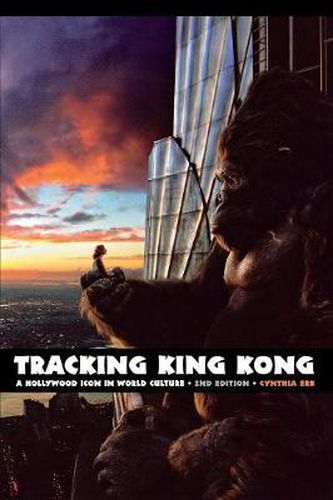Readings Newsletter
Become a Readings Member to make your shopping experience even easier.
Sign in or sign up for free!
You’re not far away from qualifying for FREE standard shipping within Australia
You’ve qualified for FREE standard shipping within Australia
The cart is loading…






This title is printed to order. This book may have been self-published. If so, we cannot guarantee the quality of the content. In the main most books will have gone through the editing process however some may not. We therefore suggest that you be aware of this before ordering this book. If in doubt check either the author or publisher’s details as we are unable to accept any returns unless they are faulty. Please contact us if you have any questions.
In Tracking King Kong Cynthia Erb charts the cultural significance of the character of King Kong, from the early 1930s, when Merian C. Cooper and Ernest B. Schoedsack’s classic film King Kong was first released, to Peter Jackson’s 2005 remake. Although King Kong has received much academic attention over the past twenty-five years, the bulk of these analyses deal with the film’s human characters rather than Kong himself. In this revised edition of an influential study, Erb argues that King Kong is a particular kind of cultural outsider who represents a cross-penetration of American notions of exoticism and monstrosity. Tracking King Kong considers problems such as race and gender in the King Kong tradition, as well as historical, international, and contemporary audience and fan responses to this classic film and its popular protagonist.
Erb begins her examination of King Kong in the 1930s, when the original film was produced and released, extending through the 1970s, when the film and its hero reached the height of their cultural visibility in a remake by Dino De Laurentiis, and concluding with a look at Peter Jackson’s version in 2005. The book includes a detailed production history of the original 1933 film based on primary historical and archival sources; a genre study examining Kong’s relations to horror, jungle adventure, and travel documentary genres; an analysis of Kong’s influence on the Japanese film Godzilla; and a look at sequels, remakes, and spinoffs related to King Kong, such as Mighty Joe Young. Erb also analyzes Jackson’s remake of King Kong, to determine how and why Jackson revised the main character, casting him as a melancholy hero.
The revised edition of Tracking King Kong updates a groundbreaking study of King Kong as the iconic character enters the twenty-first century. Scholars of film and television studies as well as general readers interested in film and popular culture will appreciate this significant volume.
$9.00 standard shipping within Australia
FREE standard shipping within Australia for orders over $100.00
Express & International shipping calculated at checkout
This title is printed to order. This book may have been self-published. If so, we cannot guarantee the quality of the content. In the main most books will have gone through the editing process however some may not. We therefore suggest that you be aware of this before ordering this book. If in doubt check either the author or publisher’s details as we are unable to accept any returns unless they are faulty. Please contact us if you have any questions.
In Tracking King Kong Cynthia Erb charts the cultural significance of the character of King Kong, from the early 1930s, when Merian C. Cooper and Ernest B. Schoedsack’s classic film King Kong was first released, to Peter Jackson’s 2005 remake. Although King Kong has received much academic attention over the past twenty-five years, the bulk of these analyses deal with the film’s human characters rather than Kong himself. In this revised edition of an influential study, Erb argues that King Kong is a particular kind of cultural outsider who represents a cross-penetration of American notions of exoticism and monstrosity. Tracking King Kong considers problems such as race and gender in the King Kong tradition, as well as historical, international, and contemporary audience and fan responses to this classic film and its popular protagonist.
Erb begins her examination of King Kong in the 1930s, when the original film was produced and released, extending through the 1970s, when the film and its hero reached the height of their cultural visibility in a remake by Dino De Laurentiis, and concluding with a look at Peter Jackson’s version in 2005. The book includes a detailed production history of the original 1933 film based on primary historical and archival sources; a genre study examining Kong’s relations to horror, jungle adventure, and travel documentary genres; an analysis of Kong’s influence on the Japanese film Godzilla; and a look at sequels, remakes, and spinoffs related to King Kong, such as Mighty Joe Young. Erb also analyzes Jackson’s remake of King Kong, to determine how and why Jackson revised the main character, casting him as a melancholy hero.
The revised edition of Tracking King Kong updates a groundbreaking study of King Kong as the iconic character enters the twenty-first century. Scholars of film and television studies as well as general readers interested in film and popular culture will appreciate this significant volume.